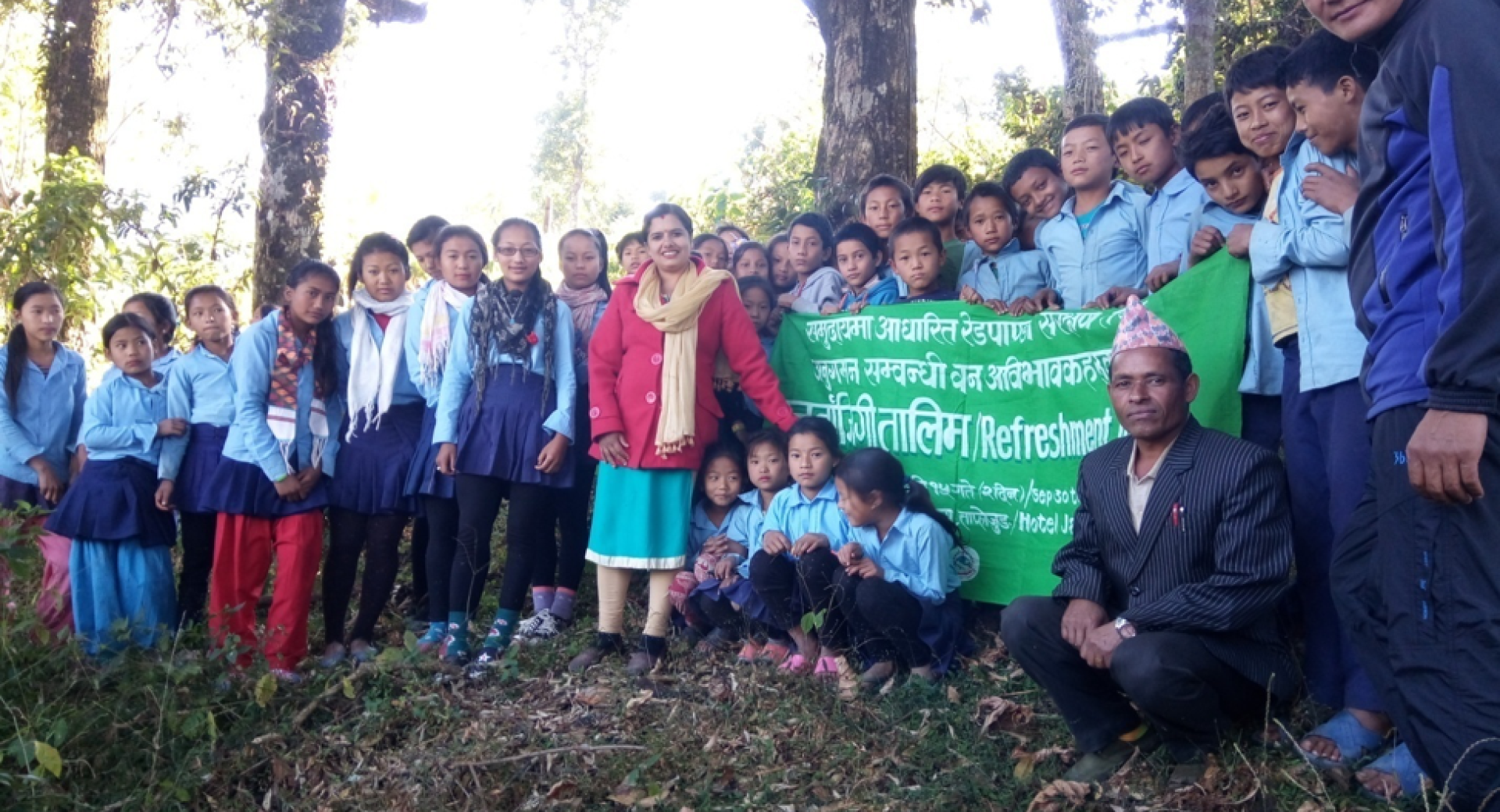
How we are fostering a new generation of red panda conservationists in Nepal.
Red Panda Network (RPN) knows how important young people are to the future of red pandas. This is why we are working with 29 schools in the Panchthar-Ilam-Taplejung (PIT) corridor of Eastern Nepal to foster environmental stewardship among students.
Our efforts include the publication and integration of a red panda conservation manual into local school curriculums, teacher trainings, formation of International Red Panda Day (IRPD) events, mini ecotrips in red panda habitat and a red panda bulletin.
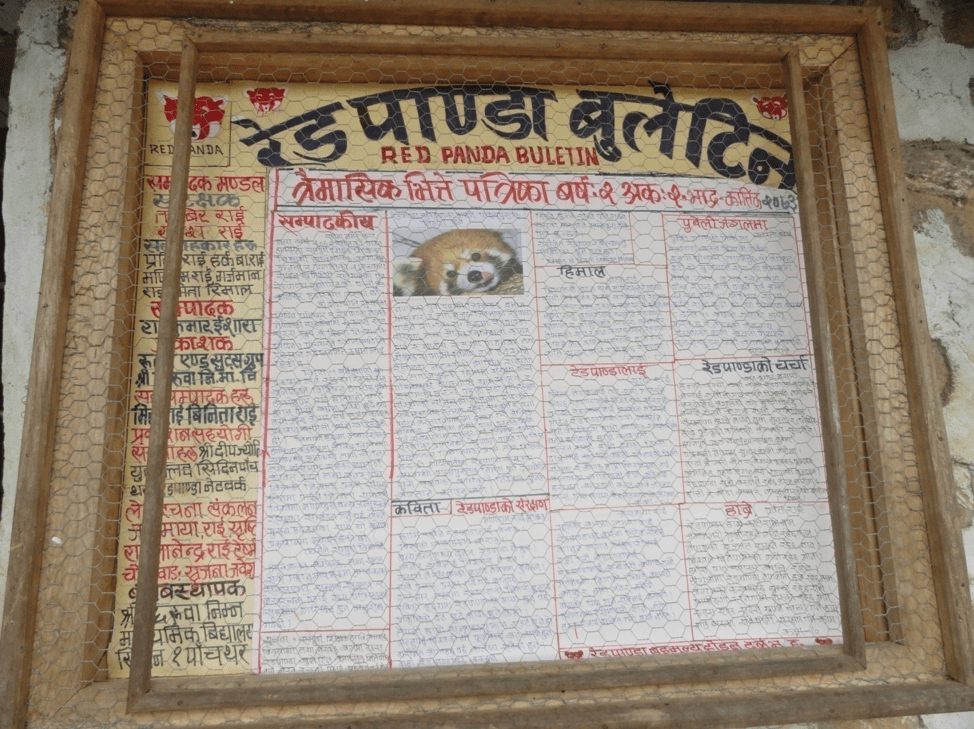 Red panda bulletin.
Red panda bulletin.
One student, Maya Giri of Himalaya Secondary School, Gorkhe, Ilam, was already aware of the mysterious red pandas who inhabit the surrounding forests.
“My father is a Forest Guardian,” explained Maya during an interview with RPN’s Conservation Coordinator, Pema Sherpa, “his job is to protect red pandas and their home.”
Forest Guardians are RPN’s conservation ambassadors among the communities in red panda range. They are local people who are trained to monitor the forests, report poachers to enforcement agencies and educate their fellow community members about the importance of red pandas.
RPN’s Conservation Manager, Damber Bista, is an avid believer of this program, “Forest Guardians are who make our community-based conservation programs so successful.”
Naturally, Maya has learned about red pandas from her father, but the activities at her school have provided her with a more thorough understanding of this endangered species.
Maya also has a special connection to red pandas. “The impact of their [RPN] work on the community has been important. My father said that our family is where we are because of these furry creatures. I have a lot of love and respect for them. I would like to become a RPN Forest Guardian like my father someday.”
Maya is referring to RPN’s sustainable livelihood initiatives, and the Forest Guardian program is the centerpiece of this effort to reduce poverty and better the lives of local people. We achieve this through income generation and increasing accessibility to sustainable resources and improved technologies. Our ecotourism, RPN enterprises, forest conservation nurseries and sustainable herding programs also create incentives to protect red panda habitat and reduce dependency on the forest’s finite resources.
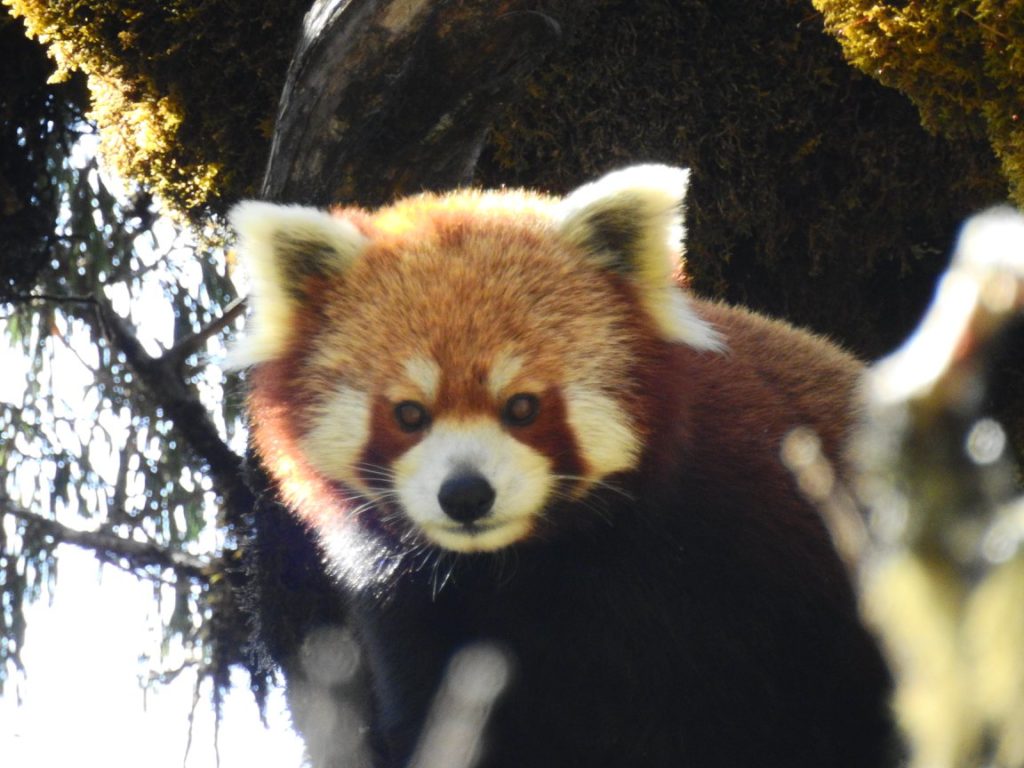
Red panda photographed during RPN ecotrip. Photo by Kuniko Kai
RPN’s youth outreach activities ensures that Maya and her classmates will continue to learn about red pandas and local biodiversity. Through the Roots and Shoots program, which includes 3,000 students from local schools, they will have the opportunity to participate in a mini ecotrip to protected red panda habitat. Nearly 5,000 students in the region will also celebrate IRPD.
We developed a red panda conservation manual and are working with schools throughout the Panchthar-Ilam-Taplejung (PIT) corridor in integrating red panda conservation education into their curriculums. We provide trainings for teachers on how to prepare lessons and teach red panda conservation.
The red panda bulletin is a student-led (under teacher supervision) quarterly release made up of stories, poems, songs and artwork related to red pandas and other wildlife collected from fellow students
“The goal of the bulletin is to educate and engage students in wildlife conservation,” remarks Bista. “They are the future of red panda conservation.”
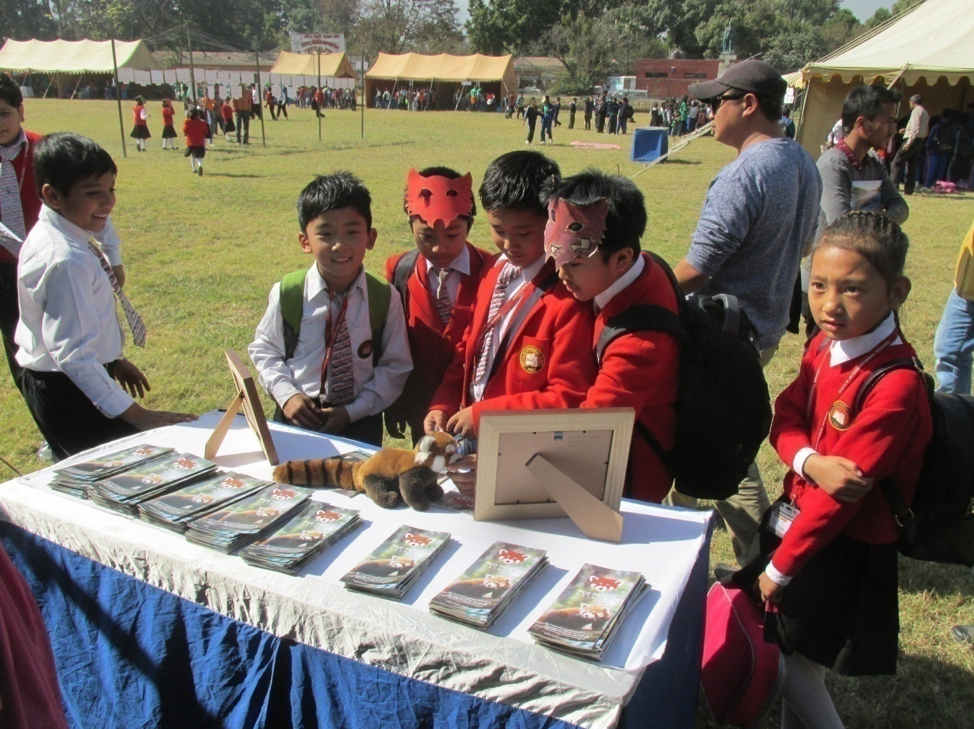
Students during school IRPD event.
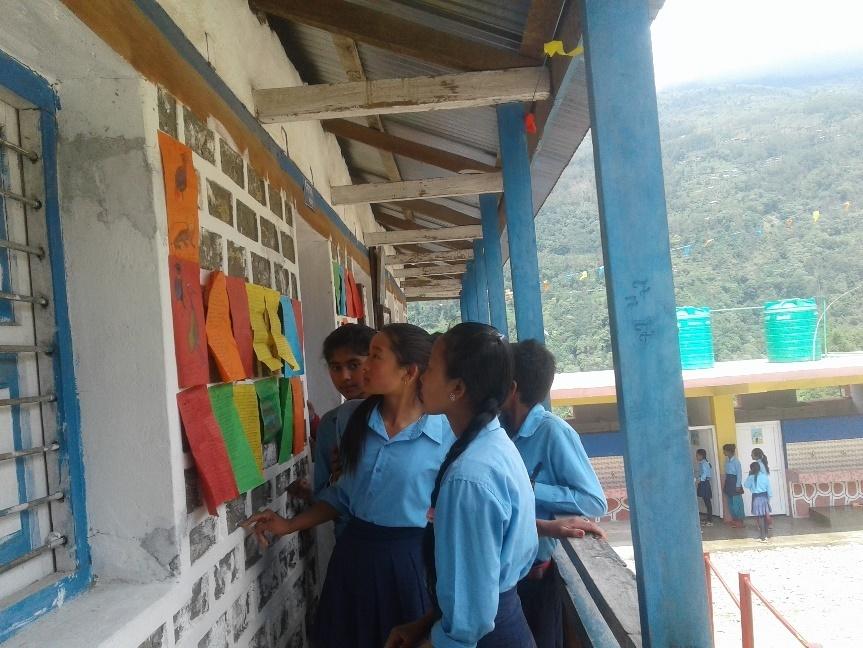 Maya Giri and classmates.
Maya Giri and classmates.
Terrance Fleming
Development Manager
Red Panda Network
